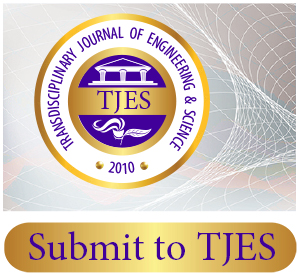| Information |
|---|
| For Readers |
| For Authors |
| For Librarians |
About the Journal
Welcome to the TJES online submission site! This site has been created to assist authors in submitting their work for publication consideration in the Transdisciplinary Journal of Engineering & Science (TJES). The Transdisciplinary Journal of Engineering & Science is dedicated to honor Professor John Warfield by recognizing responsibilities for a culture of peace and transdisciplinary knowledge.

Professor John Warfield and his colleagues analyzed complexity and human cognition for over forty years and developed the founding relationships for the still-emerging systems science discipline that underpins significant portions of modern systems engineering. His rich body of work embodies analytical methods and frameworks, behavioral science and philosophies that formalize our understanding of complexity in our world.
The Transdisciplinary Journal of Engineering & Science (TJES) is the official international journal of the Academy of Transdisciplinary Learning & Advanced Studies (ATLAS),www.theatlas.org. TJES is peer-reviewed, open access annually only one issue published journal which bridges the gap between science, engineering, art, and culture to solve societal complex problems.
Published articles will be archived using both LOCKSS and CLOCKSS archival system
Convergence: Transdisciplinary Integration
Convergence: facilitating transdisciplinary integration of life sciences, physical sciences, engineering, and beyond is an approach to problem-solving that cuts across disciplinary boundaries. It integrates knowledge, tools, and ways of thinking from life and health sciences, physical, mathematical, and computational sciences, engineering disciplines, and beyond to form a comprehensive synthetic framework for tackling scientific and societal challenges that exist at the interfaces of multiple fields. By merging these diverse areas of expertise in a network of partnerships, convergence stimulates innovation from basic science discovery to transnational application. It provides fertile ground for new collaborations that engage stakeholders and partners not only from academia, but also from national laboratories, industry, clinical settings, and funding bodies." (National Research Council of the National Academies, 2014).
Transdisciplinarity
Within many fields, such as medicine, biosciences, and cognitive science, there is a growing awareness of the need for transdisciplinary approaches. Likewise, engineering education and research needs to be supplemented by a fundamentally new way of addressing the multidimensional, complex problems that society faces today. Because of the nature of modern engineering systems, traditional disciplinary approaches have proven insufficient; as such, researchers and educators are operating beyond traditional disciplinary boundaries to explore complementary approaches. Products have become integrated engineering systems, and design and production requirements regularly traverse disciplinary boundaries. This requires input from multiple disciplines within engineering, as well as other disciplines outside of science and engineering, such as business, social sciences, medicine, etc. As the pace of development of new technical systems has continued to accelerate, the need has shifted from interdisciplinary or multidisciplinary design teams to trans-organizational and trans-national work.
During the last decade, the number of complex problems facing engineers has exploded, and the technical knowledge and understanding in science and engineering required to attack these problems is rapidly evolving. A few examples are the groundbreaking advancements in semiconductor and software technologies, the biosciences, and nanotechnology. The last two decades of designing large-scale engineering systems taught us that neither disciplinary, nor multidisciplinary or interdisciplinary approaches provide an environment that promotes the collaboration and synthesis necessary to extend beyond existing disciplinary boundaries.
A sound transdisciplinary science of engineering systems needs, of course, to incorporate knowledge from many different areas. The core of knowledge centered on design and process will be augmented, based on discipline-specific knowledge depending on the problem at hand. The core of design and process knowledge will also be necessarily broad, incorporating concepts and methods from separate disciplines.
Transdisciplinary education and research take collaboration across disciplinary boundaries a step further than do multidisciplinary and interdisciplinary programs. In following the transdisciplinary concept, researchers representing diverse disciplines work jointly to develop and use a shared conceptual framework that draws upon discipline specific concepts, theories, and methods, while addressing common problems through a new synthesis of a common ontology, theories, models, and methodology.


